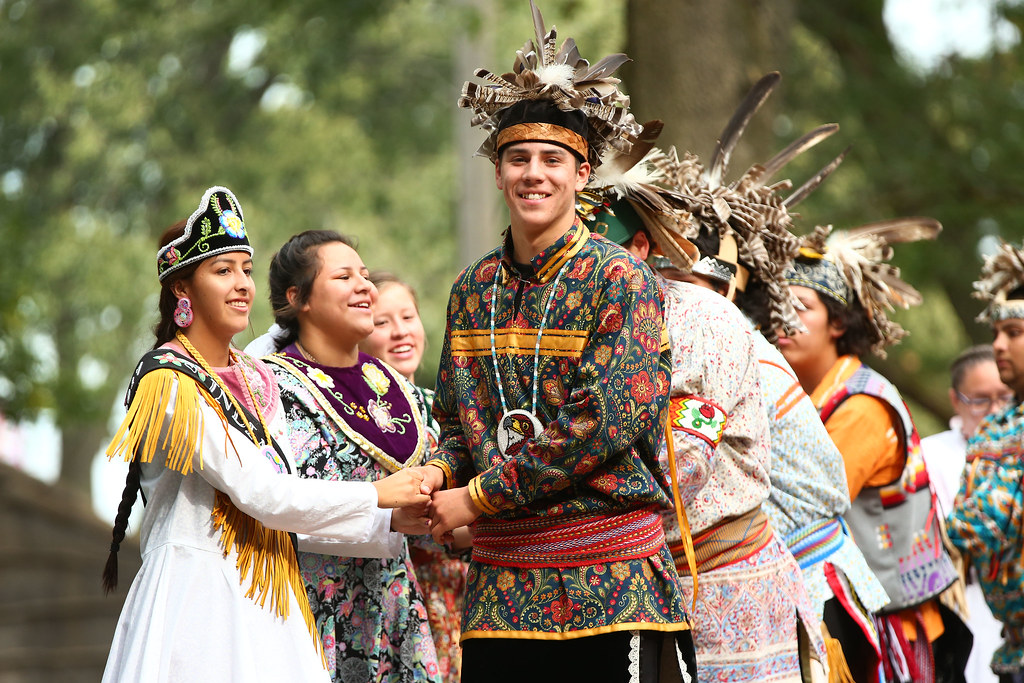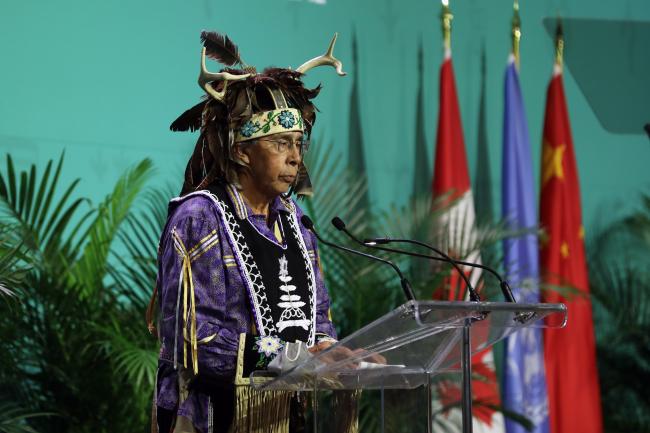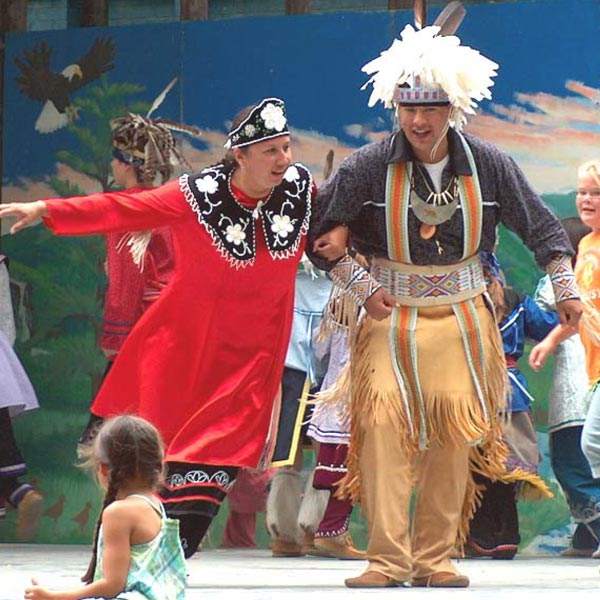
The Enduring Flame: Onondaga’s Ancient Governance Burns Bright
ONONDAGA NATION, NEW YORK – In a world grappling with the complexities of modern governance, from fractious parliaments to the relentless pursuit of short-term gains, an ancient system of leadership rooted deeply in the lands of what is now central New York continues to thrive. For over a millennium, the Onondaga Nation, the "Central Fire" of the Haudenosaunee (Iroquois) Confederacy, has maintained a unique and profound form of traditional government, a living testament to peace, balance, and foresight that offers potent lessons for humanity today.
Far from being a relic of the past, the Onondaga traditional government is a vibrant, evolving entity, deeply embedded in the daily lives and spiritual practices of its people. It is a system built not on conquest or coercion, but on consensus, responsibility to future generations, and an profound connection to the natural world.

The Genesis of Peace: The Great Law
To understand the Onondaga system, one must first understand the Haudenosaunee Confederacy itself. Comprising the Mohawk, Oneida, Onondaga, Cayuga, and Seneca Nations (later joined by the Tuscarora), the Confederacy was brought together by the Peacemaker, Deganawidah, and his disciple, Hiawatha, sometime between 1000 and 1600 AD. They introduced the Gayanashagowa, or the Great Law of Peace – a constitution so sophisticated it is believed to have influenced the framers of the United States Constitution.
The Onondaga Nation holds a pivotal role within this confederacy. "We are the Keepers of the Central Fire," explains Tadodaho Sid Hill, the spiritual and traditional leader of the Onondaga Nation. "Our role is to host the Grand Council, where the Chiefs of the Confederacy gather. It’s a great responsibility to keep the fire burning, to ensure the peace is maintained among all our nations."
This "Central Fire" refers to the Onondaga Nation’s traditional territory, where the Grand Council meetings have historically taken place, serving as the symbolic heart of the Haudenosaunee.
The Pillars of Power: Clan Mothers and Chiefs
At the heart of Onondaga governance lies a delicate yet powerful balance between two primary roles: the Clan Mothers (Ogweñ’gawëh) and the Chiefs (Hoyaneh). Unlike many Western political structures, the power dynamic is distinctly matriarchal.
"The Clan Mothers are the bedrock of our society," asserts Jeanne Shenandoah, an Onondaga Clan Mother. "We hold the land, we name the children, and most importantly, we select and remove the Chiefs. It is our responsibility to ensure the Chiefs always act with a good mind and for the welfare of the people and the land."
Clan Mothers are typically elder women, chosen by their respective clans (such as Turtle, Bear, or Wolf) based on their wisdom, integrity, and dedication to community well-being. Their authority is immense: they nominate the Hoyaneh, or "Good Minds," who serve as the spokespeople and representatives of the people. If a Chief fails in his duties, acts selfishly, or does not uphold the Great Law, the Clan Mother has the power to "take back his antlers" – a symbolic removal of his authority. This accountability mechanism ensures leadership remains aligned with the collective good.

The Hoyaneh, who are men, are not rulers but rather servants of the people. They are chosen for their eloquence, wisdom, and ability to mediate and build consensus. Their role is to listen, deliberate, and speak on behalf of their clan and nation. "A Chief is not there to tell people what to do," explains Chief Samuel Thomas. "He is there to articulate the will of the people, to guide discussion, and to uphold the principles of the Great Law. His authority comes from the people, not from himself."
Decisions within the Onondaga system, and indeed across the Haudenosaunee Confederacy, are made through a meticulous process of consensus. Discussions can be lengthy, sometimes spanning days or even weeks, as every voice is heard, and every concern addressed. The goal is not simply a majority vote, but a "one mind" – a collective agreement that everyone can support. This patient, deliberative approach ensures that decisions are robust and have broad community backing.
The Seventh Generation Principle and Environmental Stewardship
Perhaps one of the most profound principles guiding Onondaga governance is the concept of the Seventh Generation. This teaching mandates that every decision made today must consider its impact on the seventh generation into the future – roughly 200 to 250 years from now.
"When we make a decision, we ask ourselves, ‘How will this affect our great-great-great-great-grandchildren?’" says Tadodaho Sid Hill. "It forces us to think beyond our own lifespan, beyond profit margins or political cycles. It’s about protecting the land, the water, the air, because that is what sustains us all."
This long-term perspective naturally translates into a deep commitment to environmental stewardship. The Onondaga Nation has been at the forefront of efforts to protect and restore Onondaga Lake, once one of the most polluted lakes in America, which holds immense cultural and historical significance for the Nation. In 2005, the Onondaga Nation filed a historic land claim against New York State, not to reclaim the land for exclusive use, but to assert their aboriginal title and, crucially, to compel the state and corporations to clean up environmental contamination and restore the land for future generations.
"Our land claim wasn’t about money," Chief Jake Edwards once stated. "It was about healing the Earth. It’s about ensuring that the sacred places and the natural world are there for our children’s children." This legal battle, though ultimately unsuccessful in the U.S. court system, highlighted the profound difference in worldview between the Onondaga Nation’s traditional governance and the Western legal framework.
Wampum: Living Documents of Law and History
The principles and agreements of the Great Law and subsequent treaties are not written on paper but are embodied in Wampum belts. These intricate belts, made of purple and white shell beads, serve as mnemonic devices, historical records, and sacred documents.
The Hiawatha Belt, for instance, symbolizes the unity of the five original Haudenosaunee nations, with the Onondaga represented by the central tree of peace. The Two Row Wampum (Guswenta) belt, presented to Dutch settlers in 1613, represents a foundational agreement between the Haudenosaunee and European newcomers. It depicts two parallel rows of purple beads on a white background: one row represents the Indigenous people in their canoe, with their laws and ways; the other represents the Europeans in their ship, with their own laws and ways. The three white rows in between symbolize peace, friendship, and respect.
"The Two Row Wampum teaches us that we will travel side by side, in our own vessels, never interfering with each other’s ways, as long as the grass grows, the sun shines, and the rivers flow," explains an Onondaga elder. This enduring principle of non-interference and mutual respect remains a cornerstone of Onondaga foreign relations and their understanding of sovereignty.
Endurance Through Adversity
The Onondaga traditional government has faced relentless pressure over centuries. Colonial expansion, forced assimilation policies, and the imposition of foreign governmental structures (including elected band councils by Canada and the U.S.) have all sought to dismantle their ancient ways. Yet, the Onondaga Nation has steadfastly refused to abandon its traditional system.
"We have always been here, and our government has always been here," states a community member. "We survived because we held onto our ceremonies, our language, and our traditional leaders. It’s who we are."
This resilience is not simply a matter of stubbornness; it’s a testament to the profound effectiveness and inherent strength of their system. In a world often characterized by division and short-sightedness, the Onondaga government offers a powerful counter-narrative: one of deep responsibility, collective well-being, and an unwavering commitment to the future.
Lessons for the Modern World
The Onondaga traditional government stands as a powerful model of sustainable governance. Its emphasis on consensus, the crucial role of women in leadership, the long-term perspective of the Seventh Generation, and its inherent connection to environmental stewardship offer invaluable lessons for contemporary societies grappling with climate change, social fragmentation, and political instability.
As the Central Fire continues to burn at Onondaga, it casts a light not just on a resilient Indigenous nation, but on a path towards a more peaceful, equitable, and sustainable future for all. The ancient wisdom of the Onondaga, meticulously preserved and practiced, serves as a beacon, reminding us that true leadership lies in serving the people and the planet, not just for today, but for the countless generations yet to come.


